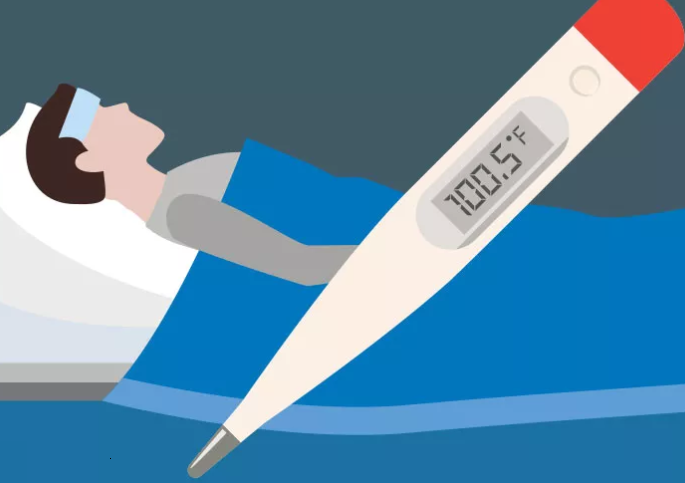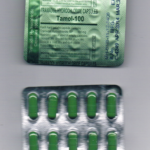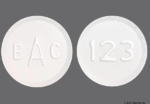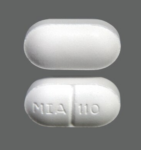A fever is defined as a body temperature of 38°C (100.4°F) or higher. Normal body temperature is usually 37°C (98.6°F), although it can be about a half degree Celsius higher or lower for some people and that’s normal for them. A fever is when your body temperature is higher than your normal average temp. Most providers say a fever is either 100.0 F (37.8 C) or 100.4 F (38 C). When you have a fever, it’s your body’s normal response to fighting an infection or illness.

A fever occurs when your brain sets your body temperature higher than normal. Normal body temperature can change during the day based on activity level, hormone levels and whether you are sleeping or awake.
Your normal body temperature is regulated or set by an area of your brain called your hypothalamus. Fever occurs when your body’s defense system — your immune system — reacts to an infection or illness, triggering your brain to raise your body temperature. This helps your immune system fight off the illness or infection, but a very high temperature can be dangerous.
Fever is not the same as hyperthermia, which means your body temperature goes up due to the outside temperature.
Hyperthermia is not caused by your brain and immune system. An example would be heat stroke.
A fever is generally defined as a body temperature that is higher than normal. The normal body temperature for most people is around 98.6°F (37°C), but it can vary slightly.
- A fever is typically considered to be a body temperature of 100.4°F (38°C) or higher.
- A low-grade fever is a temperature between 100.4°F (38°C) and 102°F (38.9°C).
- A high fever is generally considered to be 103°F (39.4°C) or higher.
It’s important to note that body temperature can vary slightly depending on factors such as the time of day, activity levels, and the method of measurement (oral, rectal, ear, or forehead thermometers).
Fevers are often the body’s natural response to infection, but if a fever is persistent or very high, medical attention may be necessary.
Fever grades in adults
In an adult, a fever may be elevated, high or very high:
- An elevated body temperature is between 37.5°C and 38°C (99.5°F to 100.4°F).
- A fever is 38°C to 39.5°C (100.4°F to 103.1°F).
- A high fever is 39.5°C (103.1°F).
- A very high fever is above 41°C (105.8°F ).
Fever in babies and children
According to the American Academy of Pediatrics (AAP), normal temperature in children varies with a child’s age, time of day and level of activity.
Fever is defined as a temperature of 38°C (100.4°F).
- A fever that requires a call to the pediatrician right away would be 38°C (100.4°F) or higher for a baby under 3 months old.
- A fever above 40°C (104°F) requires a call to the doctor at any age.
How to Measure Fever
To take your temperature, a digital thermometer is recommended instead of a mercury thermometer, especially in children, because mercury from a broken thermometer may be toxic.
There are three types of digital thermometers. There are many variations, so it is important to read and follow the thermometer instructions carefully. They all must be turned on and they will beep to tell you when to read them:
- A digital multi-use thermometer can be used to take a rectal, oral (mouth) or axillary (armpit) temperature in adults and children. In general, oral and armpit temperatures have not shown to be as accurate as rectal. Oral use is not recommended for children under age 4, according to the AAP, and AAP notes that rectal use is best, especially for infants and children under 3 months. Always clean the thermometer before and after use, and do not use a thermometer orally that has been used rectally. Do not take an oral temperature for 30 minutes after a hot or cold drink.
- A temporal or forehead artery thermometer reads your temperature from a blood vessel under the skin of your temple or forehead. You will need to check the instructions to find out how far away from your skin to hold it. If you have been in hot or cold temperatures, you should adjust to normal temperature before taking a reading.
- A tympanic digital thermometer measures heat inside your ear canal. This type can be used for anyone except babies.
What’s Happening in My Body When I Have a Fever?
When you have a fever, it indicates that your body is responding to an infection or illness. Here’s a breakdown of what happens in your body during a fever:
1. Immune Response Activation:
- The body recognizes the presence of pathogens (like bacteria or viruses) and activates the immune system. White blood cells and other immune cells are mobilized to fight the infection.
2. Release of Pyrogens:
- In response to infection, your immune system releases substances called pyrogens. These can be produced by the immune cells themselves or can be derived from pathogens.
- Pyrogens signal the hypothalamus (the part of the brain that regulates body temperature) to increase the body’s temperature set point.
3. Increased Body Temperature:
- The hypothalamus raises the body’s temperature to create a less favorable environment for the pathogens, as many bacteria and viruses thrive at normal body temperature.
- This elevated temperature can help enhance the efficiency of immune cells, making them more effective in combating the infection.
4. Symptoms of Fever:
- As the body temperature rises, you may experience symptoms such as:
- Chills: Feeling cold and shivering as the body raises its temperature.
- Sweating: When the fever breaks, your body may sweat to cool down.
- Fatigue: The body’s energy is directed towards fighting the infection.
- Headaches and muscle aches: Caused by the body’s inflammatory response and changes in blood flow.
5. Potential Effects:
- Mild to moderate fevers are usually beneficial and indicate that the immune system is functioning effectively. However, very high fevers (above 104°F or 40°C) can be dangerous and may lead to complications such as dehydration, confusion, or seizures.
Pain Medications, Pain Relief, and Pain Management








